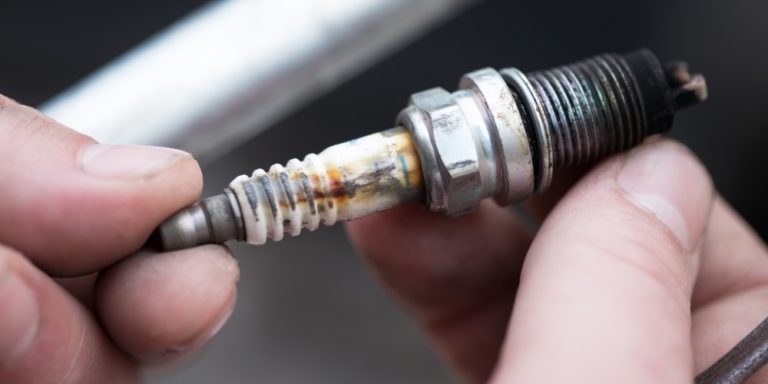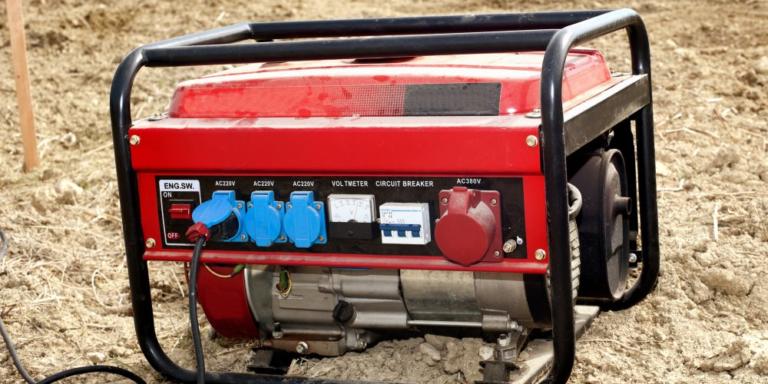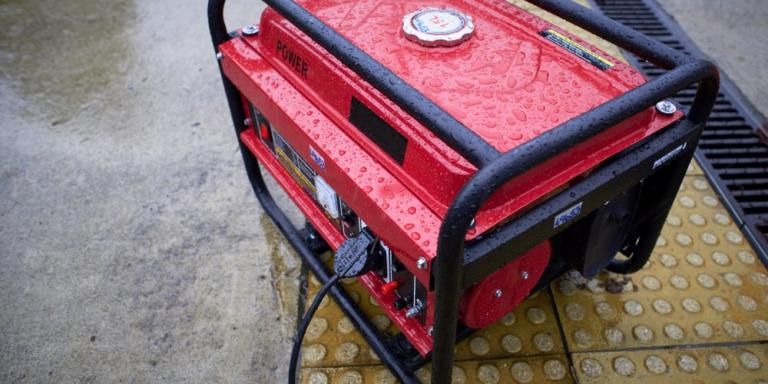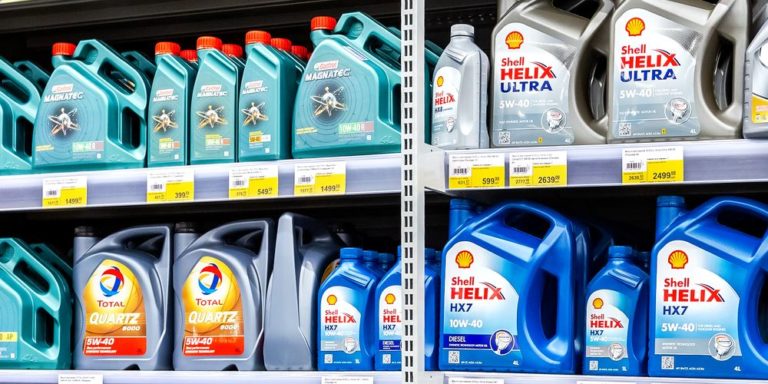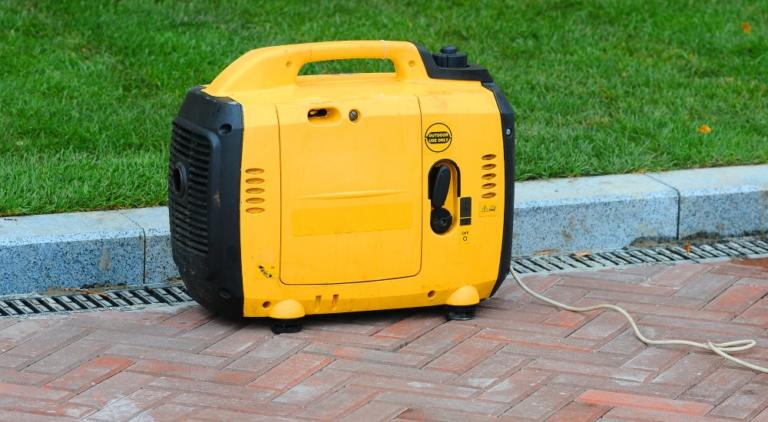Are you looking for the best type of oil for your Predator 212cc engine but have no idea how to choose one?
I have great news for you! Our team here at Generatorist has helped over 600,000 visitors find information about generators & engines and we will help you as well.
THE KEY TAKEAWAY:
The SAE 10W-30 oil is recommended for general use for the Predator 212cc engine. Winter use: SAE 5W-30 (At 32° F or below). The oil tank capacity is 0.5 Quart / 0.125 Gallons and the recommended change interval is monthly / 20 hrs. of use.
Data for this page is based on official manuals from Harbor Freight. We will show you the type of oil for specific models of Predator engines, oil capacity and links to manuals. We also provide references where you can verify this info for yourself.
Predator 212 oil type (info from the User’s Manual)
- General use: SAE 10W-30 (Above 32° F)
- Winter use: SAE 5W-30 (At 32° F or below)
- Oil capacity: 0.5 Quart / 0.125 Gallons
- Break-in oil change: 20 hours of use
- Regular oil change: Monthly / 20 hrs. of use
- Fuel type: 87+ Octane unleaded gasoline
- Fuel Capacity: 0.9 Gallon / 3.6 L
Recommended DIY Videos
- How to Change Predator 212cc Oil
- How to Do a Oil Change on a Predator 212cc Engine
- Predator 212cc Engine Oil Change in Less than 5 Minutes!
- How to Change Oil on Predator 212cc or Honda GX200
Owner´s manual – https://manuals.harborfreight.com
Official product page – https://www.harborfreight.com
Predator Engines
Oil type (info from the User’s Manual)
- General use: SAE 10W-30
- Oil capacity: 0.37 Quart / 0.0925 Gallons
- Break-in oil change: 20 hours of use
- Regular oil change: Monthly / 20 hrs. of use
DIY Video – https://www.youtube.com/watch?v=NzLO2fkhJI4
Owner´s manual – https://manuals.harborfreight.com
Official product page – https://www.harborfreight.com
Oil type (info from the User’s Manual)
- General use: 10W-30 High quality synthetic oil
- Oil capacity: 0.63 Quart / 0.1575 Gallons
- Break-in oil change: 10 hours of use
- Regular oil change: Monthly / 20 hrs. of use
DIY Video – https://www.youtube.com/watch?v=YmyFKlPzxLo
Owner´s manual – https://manuals.harborfreight.com
Official product page – https://www.harborfreight.com
Oil type (info from the User’s Manual)
- General use: SAE 10W-30 (Above 32° F)
- Winter use: SAE 5W-30 (At 32° F or below)
- Oil capacity: 0.5 Quart / 0.125 Gallons
- Break-in oil change: 20 hours of use
- Regular oil change: Monthly / 20 hrs. of use
DIY Video – https://www.youtube.com/watch?v=sfAHxJwaf7Q
Owner´s manual – https://manuals.harborfreight.com
Official product page – https://www.harborfreight.com
Oil type (info from the User’s Manual)
- General use: SAE 10W-30 (Above 32° F)
- Winter use: SAE 5W-30 (At 32° F or below)
- Oil capacity: 0.64 Quart / 0.16 Gallons
- Break-in oil change: 20 hours of use
- Regular oil change: Monthly / 20 hrs. of use
Owner´s manual – https://manuals.harborfreight.com
Official product page – https://www.harborfreight.com
- General use: SAE 10W-30 (Above 32° F)
- Winter use: SAE 5W-30 (At 32° F or below)
- Oil capacity: 1 Quart / 0.25 Gallons
- Break-in oil change: 20 hours of use
- Regular oil change: Monthly / 20 hrs. of use
Oil type (info from the User’s Manual)
- General use: SAE 10W-30 (Above 32° F)
- Winter use: SAE 5W-30 (At 32° F or below)
- Oil capacity: 1.16 Quarts / 0.29 Gallons
- Break-in oil change: 20 hours of use
- Regular oil change: Monthly / 20 hrs. of use
DIY Video – https://www.youtube.com/watch?v=g57tZQEfOGg
Owner´s manual – https://manuals.harborfreight.com
Official product page – https://www.harborfreight.com
Oil type (info from the User’s Manual)
- General use: SAE 10W-30 (Above 32° F)
- Winter use: SAE 5W-30 (At 32° F or below)
- Oil capacity: 1.16 Quarts / 0.29 Gallons
- Break-in oil change: 20 hours of use
- Regular oil change: Monthly / 20 hrs. of use
Owner´s manual – https://manuals.harborfreight.com
Official product page – https://www.harborfreight.com
Oil type (info from the User’s Manual)
- General use: SAE 10W-30 (Above 32° F)
- Winter use: SAE 5W-30 (At 32° F or below)
- Oil capacity: 2 Quarts / 0.5 Gallons
- Break-in oil change: 20 hours of use
- Regular oil change: Monthly / 20 hrs. of use
DIY Video – https://www.youtube.com/watch?v=kwpylHUOwIE
Owner´s manual – https://manuals.harborfreight.com
Official product page – https://www.harborfreight.com
Is your engine missing from the list?
Feel free to check out the Harbor Freight website in case you didn’t find your engine on this list.
KEEP IN MIND THE OIL VISCOSITY
The most crucial feature you need to pay close attention to while choosing the engine oil is its viscosity. You can find the recommended type of oil in the Owner´s Guide or Manual.
In most cases, you will need an SAE 10W-30 oil type. The 10W-30 oil from Honda (1,767+ Reviews) is the best one in this category, but it’s pricey. We think that it is the best fit for most engines.
Here is our detailed comparison of 10W-30 oil vs 5W-30 oil, the second most recommended type of oil for PREDATOR engines.
For cheaper alternatives, check out Valvoline VR1 Racing (725+ Reviews) or Castrol Motor Oil (465+ Reviews). They offer the same performance for a better price.
The SAE acronym in the name of motor oil refers to the grading system developed by the Society of Automotive Engineers. The rest of the code refers to the oil’s viscosity at different temperatures.
The first number in the code, in this case the 10W, means how well can this oil be pumped at cold temperatures. The W refers to the word winter (not the weight).
The second number in the code means how well can the oil be pumped when heated to 212 degrees Fahrenheit (100 degrees Celsius) or higher.
Also, you should select a good quality detergent oil bearing the American Petroleum Institute (API) service classifications SJ, SL, SM, or SN.
Bear in mind this fact: If you use a different type of oil than the recommended one, you may cause premature wearing of individual engine parts.
Engine Oil Viscosity Grades: SAE 30, 10W-30, and 5W-30
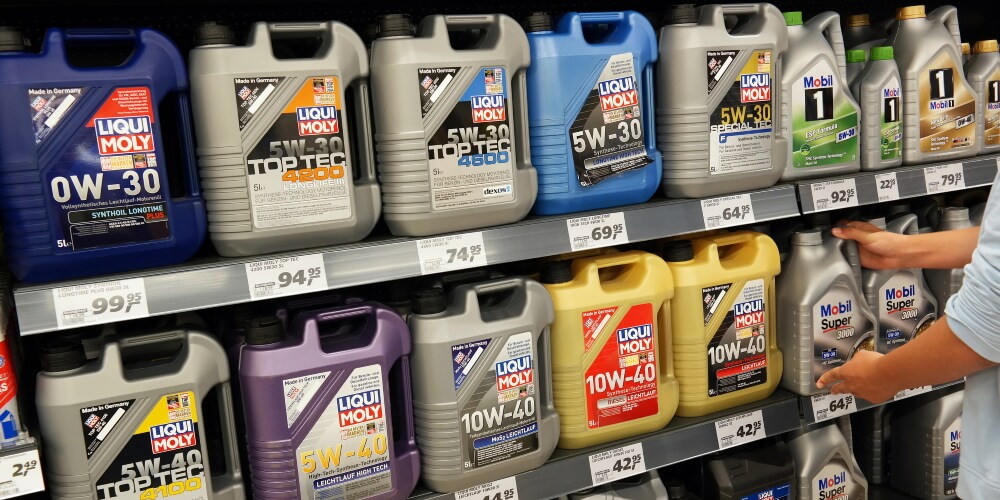
As previously discussed, the primary distinctions between SAE 30 oil, 10W-30 oil, and 5W-30 oil for engines relate to their viscosity grades and their performance across diverse temperature ranges. Let’s delve into the details:
SAE 30 Oil:
SAE 30 oil is a single-grade oil with a viscosity grade of 30, signifying a consistent viscosity level suitable for operation in moderate to high-temperature conditions.
It is typically recommended for use in warmer environments and for running engines at temperatures exceeding 40°F (4°C). However, its performance might be compromised in colder climates.
10W-30 Oil:
10W-30 oil is a multi-grade oil with dual viscosity grades. The “10W” designation represents the oil’s viscosity in cold weather, while the “30” signifies its viscosity in hotter conditions.
The “W” denotes winter, indicating that this oil exhibits superior flow characteristics in colder temperatures.
The “10W” indicates a lower viscosity at low temperatures compared to SAE 30 oil, making it more suitable for engines in colder climates or during winter. The “30” represents its viscosity at elevated temperatures, akin to SAE 30 oil.
5W-30 Oil:
5W-30 oil is also a multi-grade oil featuring two viscosity grades. The “5W” label indicates an even lower viscosity at low temperatures compared to both SAE 30 and 10W-30 oils.
This renders it an ideal choice for exceedingly cold climates or extremely low temperatures, ensuring smooth engine starts. The “30” indicates its viscosity at higher temperatures, which aligns with the other two oils.
For engines, the optimal oil selection depends on the ambient temperature within which the engine will be operating. Here are some general pointers:
- If you reside in a warmer region where temperatures rarely dip below 40°F (4°C), SAE 30 oil should suffice for your engine.
- If your locality experiences fluctuating temperatures or occasional cold spells, 10W-30 oil can serve as a versatile all-season option.
- If you inhabit an extremely cold climate with sub-zero temperatures, 5W-30 oil is recommended to facilitate effortless starting and adequate lubrication in exceptionally frigid conditions.
Always consult your engine’s manual or adhere to the manufacturer’s recommendations for the suggested oil viscosity for your particular model, as this may vary depending on the engine’s design and specifications.
THE IDEAL OIL CHANGE FREQUENCY
The main idea for changing the oil at regular intervals is to make your engine last as long as possible and avoid unnecessary damage.
The general rule is to change the oil after the first 20-30 hours of operation and every 100 hours of run time thereafter. With synthetic oil, you can double the run time to 200 hours.
To sum up the ideal oil change frequency:
- The break-in oil change is at 20 hours
- Monthly / 20 hrs. of use
- Every 6 months of use
- Every 100 hours of use
When you are not sure of the ideal interval, just remember this: You can’t go wrong with changing the oil sooner rather than later.
HOW TO CHANGE OIL IN YOUR PREDATOR ENGINE
Changing the oil in your Predator engine involves the following steps:
- First, you need to locate the oil drain plug. It is located on the bottom of the engine near the oil filler cap.
- Place an oil pan or container underneath the oil drain plug to catch the used oil.
- Remove the oil drain plug by using a socket wrench or an adjustable wrench. Make sure you loosen it enough to allow the oil to drain completely, but don’t remove it all the way yet.
- Wait for the used oil to drain out completely into the oil pan. This may take a few minutes, depending on the amount of oil in the engine.
- Once the oil has drained out completely, replace the oil drain plug and tighten it securely.
- Remove the oil filler cap from the top of the engine and pour the recommended amount of fresh oil into the engine. You can find the recommended oil type and quantity in the owner’s manual or on the engine itself.
- Replace the oil filler cap and start the engine. Let it run for a few minutes to circulate the fresh oil throughout the engine.
- After running the engine for a few minutes, turn it off and check the oil level using the dipstick. If necessary, add more oil until the level reaches the appropriate level.
- Finally, dispose of the used oil in an environmentally friendly way. You can take it to a recycling center or an auto parts store that accepts used oil.
READ NEXT ON GENERATORIST:
- Choosing the Best Oil for Your Generator
- Predator Generators Spark Plug Gap & Socket Size Guide
- Predator Generators Fuel Type, Capacity & Run Time Guide
- Choosing the Best Spark Plug for Your Generator
- How to Change Spark Plug on Your Generator
- How to Store Your Portable Generator
- How to Easily Tune Up Your Generator
- Honda Generators Spark Plug Gap & Socket Size Guide
- Honda Engines Spark Plug Gap & Socket Size Guide
- What Is an Inverter Generator & How Does It Work?
- Predator 3500 Generator Oil Type, Capacity & Change Interval Guide
About Generatorist

Matthew Gerther
Founder, Generator enthusiast
Our aim here at the Generatorist is to become the No. 1 resource for all things related to generators & your power needs. We have helped over 600,000 visitors with our tips, articles and reviews and we will help you as well.
Our work has been featured in many publications around the world – Yahoo.com, Telegram.com, PaylessPower.com, PopSci.com, TopTenReviews.com, TechRepublic.com, iRV2.com, ThePrepared.com, Renogy.com or ADT Solar. Generators are our passion, and we strive to provide the most reliable & most comprehensive information out there.



